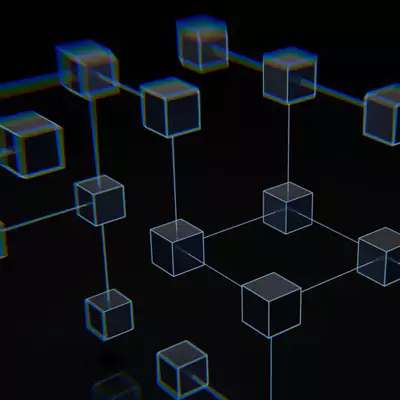What is the technology behind blockchains? How Are Blockchain Transactions Processed?

You have undoubtedly heard the term "blockchain technology" in relation to cryptocurrencies like Bitcoin during the past several years. To be more precise, you could be wondering, "What is blockchain technology?" Given that blockchain lacks a clear definition that the average person may readily grasp, it appears to be a common phrase, although a hypothetical one. It is essential to provide an explanation of "what is blockchain technology," covering its applications, mechanisms, and growing significance in the world of technology.
It is your responsibility to get knowledgeable about this developing technology in order to be ready for the future as blockchain expands and becomes more approachable. This is the ideal venue to learn the fundamentals of blockchain if you are new to it. You may find out the solution to the query "what is blockchain technology?" in this article. You will also discover the workings of blockchain, its significance, and the ways in which this sector may help you progress in your career.
What Is Blockchain Technology?
Blockchain is a technique for storing data that makes it difficult or impossible for outside parties to alter, hack, or manipulate the system. A distributed ledger, or blockchain, is a network of computers that replicates and disperses transactions between itself.
Blockchain technology is a framework that uses many databases, referred to as the "chain," connected by peer-to-peer nodes, to store public transactional records, or blocks. This type of storage is commonly known as a "digital ledger."
The digital signature of the owner authorizes each transaction in this ledger, ensuring its authenticity and preventing any manipulation. Because of this, the data in the digital ledger is extremely safe.
Why is Blockchain Popular?
Let's say you are sending money from your bank account to relatives or pals. Using their account number, you would access online banking and send the money to the recipient. Your bank updates the transaction records when the transaction is completed. It looks very easy, doesn't it? A possible problem exists that most of us ignore.
Transactions of this kind are easily tampered with. Since people are aware of this fact, they frequently avoid utilizing these kinds of transactions, which is why third-party payment programs have grown in popularity recently. But the main motivation behind the creation of Blockchain technology was this weakness.
Blockchain is a technologically advanced digital ledger that has gained a lot of interest recently. But why has it gained such a following? Now let's explore it more to fully understand the idea. Data and transaction recording is an essential aspect of corporate operations. This information is frequently managed internally or sent via intermediaries like bankers, brokers, or attorneys, adding time, expense, or both to the company's operations. Thankfully, Blockchain bypasses this extended procedure and speeds up transaction processing, saving time and money. The common misconception is that Blockchain and Bitcoin may be used interchangeably, however this is untrue. Although Bitcoin is a currency that depends on Blockchain technology for security, Blockchain technology itself is capable of supporting a wide range of applications connected to different sectors, including manufacturing, supply chain, banking, and so forth.
Blockchain is a cutting-edge technology that offers several benefits in a world going digital:
1. Extremely Safe
It employs a digital signature function to ensure that transactions are free from fraud, making it difficult for other users to alter or modify a user's data without a unique digital signature.
2. Dispersed System
Normally, transactions require the consent of regulating bodies like banks or the government. With Blockchain, on the other hand, transactions are carried out by user consensus, which makes them faster, safer, and more seamless.
3. Ability to Automate
Because it is programmable, when the trigger's conditions are satisfied, it may automatically produce payments, events, and systematic activities.
Structure and Design of Blockchain:
At its foundation, a blockchain is a distributed, immutable, and decentralized ledger made up of a series of blocks, each of which has a collection of data. Using cryptographic methods, the blocks are connected to create a chronological chain of data. A blockchain's consensus mechanism, which consists of a network of nodes that concur on a transaction's authority before adding it to the blockchain, is built into the structure to protect data.
Blocks:
In a blockchain, a block consists of three primary parts:
1. The header includes metadata like the hash of the preceding block and a date with a random integer used in the mining process.
2. The primary and actual data, such as transactions and smart contracts that are saved in the block, are contained in the data portion.
3. Finally, for verification purposes, the hash is a distinct cryptographic value that serves as a representation of the complete block.
Block Time:
In a blockchain, block time is the amount of time it takes to create a new block. The block timings of various blockchains might range, ranging from a few seconds to minutes or even hours. Longer block timings may extend the time it takes for transaction confirmations while decreasing the likelihood of conflicts. While shorter block times may result in faster transaction confirmations, the likelihood of conflicts is higher.
Hard Forks:
A permanent split in a blockchain's history that creates two distinct chains is referred to as a "hard fork." It may occur when there is a fundamental modification to a blockchain's protocol and not all nodes concur on the upgrade. Hard forks can break apart already-existing cryptocurrencies or establish new ones, and they must be resolved by network users coming to an agreement.
Decentralization:
The fundamental characteristic of blockchain technology is decentralization. A decentralized blockchain prevents network control by a single central authority. Decentralization is sharing decision-making authority among a network of nodes that agree and approve transactions to be put to the blockchain as a group. The decentralized structure of blockchain technology contributes to the advancement of security, trust, and transparency. It also lessens the chance of data tampering and the risk of relying on a single point of failure.
Finality:
In a blockchain, finality is the permanent confirmation of a transaction. A transaction becomes irreversible if and when it is included in a block and the block is validated by the network. This function offers a high degree of security and confidence in Blockchain Types & Sustainability by guaranteeing the accuracy of the data and preventing double spending.
Openness:
Anybody wishing to join the network may access the blockchain thanks to openness in blockchain technology. This suggests that, as long as they are aware of the consensus rules, anybody may join the network, validate transactions, and contribute new blocks to the blockchain. Openness encourages engagement from a range of stakeholders, which in turn fosters inclusion, transparency, and creativity.
Public Blockchain:
This type of blockchain is accessible to the general public and enables anybody to sign up for the network in order to transact and take part in the consensus-building process. Because every transaction on a public blockchain is visible to the public, they are transparent.




